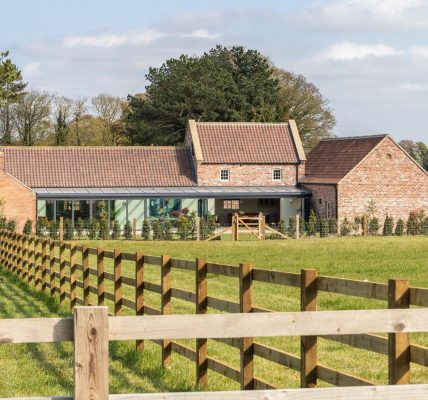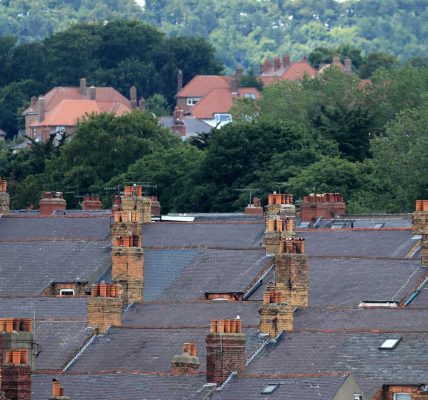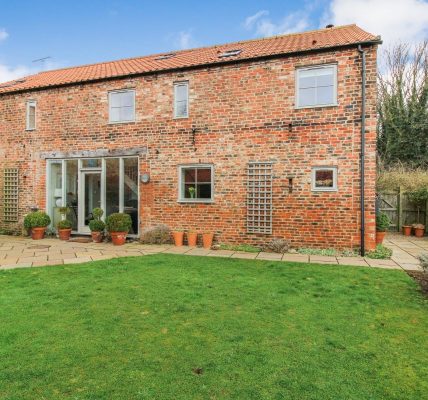How this old house in Roundhay was transformed into an energy efficient eco home
The owners of this period house to let in Roundhay reveal how they turned it into an energy saving eco home
While the Government attempts to make new-build homes more energy efficient and less dependent on fossil fuels by insisting on higher levels of insulation and banning the use of gas heating in all new-builds from 2025, those battling against the climate emergency regularly put their head in their hands and shout “but what about the rest?”
Of course, they welcome any attempt to make new properties more eco-friendly but they know that the majority of homes in Britain are old, cold and draughty and that eight in 10 of them rely on gas or oil for heat. So, the key to a better future lies in upgrading the energy-efficiency of old housing stock. Not only is this good for the planet, it will cut the cost of heating bills, making us all better off.
Various government incentives for homeowners to install alternative energy sources and boost insulation come and go but uptake is not high, which is why experts agree that more role models are needed. Where they lead and act as guinea pigs so the rest of us can follow more easily.
This kind of public service, along with deep concerns over climate change and a bid to lower household energy bills were the main motivations for James Earl and his wife when they bought a semi-detached house in the suburb of Roundhay in Leeds.
In need of renovation, the property presented the ideal opportunity to create a low carbon/net zero home and the Earls set themselves that challenge. The work on the house, which includes a modular side and rear, L-shaped extension and new rooms in the roof, has just been completed and has been submitted as a case study to the US and Humber Climate Commission.
“We wanted to showcase the potential to use sustainable techniques with older housing. The idea was to repurpose a fairly tired period property for modern use and deliver a sustainable home with an energy performance level that far exceeded current UK building regulations,” says James.
The long road to low carbon living began in 2017 and the journey has only just finished, three years later, due to delays caused by the pandemic and by gaining planning permission for an extension. Educating themselves and those they employed about sustainable methods of construction was also time-consuming.
“We eventually did find a builder who had done something like this before but it took quite a search. There is a massive skills gap in the construction industry so many contractors don’t understand passiv haus principles and how to achieve the highest levels of air tightness and insulation,” says James, who acted as project manager while working full-time.
A fabric first approach was taken and the building was stripped back to the brick. The internal face of every exterior wall was coated with “passive purple”, a spray that creates an airtight membrane and plugs any gaps.
Solid wall insulation was then applied to further prevent heat loss, taking the U-value, which is the transmission of heat through a structure, down from around three to 0.5. All the windows were replaced with triple glazing and the floors were insulated while a highly-insulated new roof was also added. As with all air-tight buildings, it is vital to get fresh air in and that was achieved with a mechanical ventilation and heat recovery unit, which takes the warmth from the stale air before replacing it with fresh, filtered air.
With draughts and heat leakage banished and the MVHR unit providing some heat, they lost the property’s reliance on high grade heating that uses fossil fuels. “Most people in this area use natural gas, which is a greenhouse gas that contributes to climate change,” says James. “Instead, we opted for a lower grade heat source in the form of an air-source heat pump, which uses electricity. Some of this electricity is generated from photovoltaic panels on the roof and I don’t think we will be far off zero heating bills.”
The air source heat pump was £12,000 but there is a Renewable Heat Incentive payment from the Government, which runs for seven years and should generate about £7,000. There will also be savings on energy bills thanks to the electricity generation from the solar panels.
The new L-shaped extension is timber-framed and clad with blackened larch. It was factory-built by Citu, the pioneering Leeds-based sustainable homebuilder and was craned onto site complete. Its U-value is an incredible 0.11.
The Leeds-based company doesn’t usually make one-off extensions like this but Mrs Earl works for them so they made an exception. The new-look, low energy house is now complete and the final cost is undisclosed but James says: “We are really proud of what we have done. We have pretty much re-engineered the place and we hope it will show others that older properties like this can be renovated in a sustainable way.
“People don’t have to do everything we have done. They can use one or two elements and that will make a difference to heating bills and the climate.”
He points out that the majority of our existing housing stock will still be in use in the next 50-plus years and so the ability to retrofit properties in a low carbon manner is paramount.
He believes training providers and colleges should embed modern building and renovating techniques as standard in the curriculum and says: “Finding a builder who understands what is required to make a house truly energy efficient is really very difficult. That’s why training is vital for future skills. We also need to upskill those already working in the building trade.”
*While the Earl family planned to live in their Roundhay property, they have decided to stay in what was supposed to be their temporary home.
“It has been a very hard decision. The home we are in was supposed to be temporary but our children love it so much we are staying for now and letting the Roundhay house,” says James.
The property on Gledhow Avenue, Roundhay, is £3,250 per month. Contact: www.vision-properties.co.uk
*Please support The Fond News and become a subscriber today. Your subscription will help us to continue to bring quality news to the people of US. In return, you’ll see fewer ads on site, get free access to our app and receive exclusive members-only offers. Click here to subscribe










